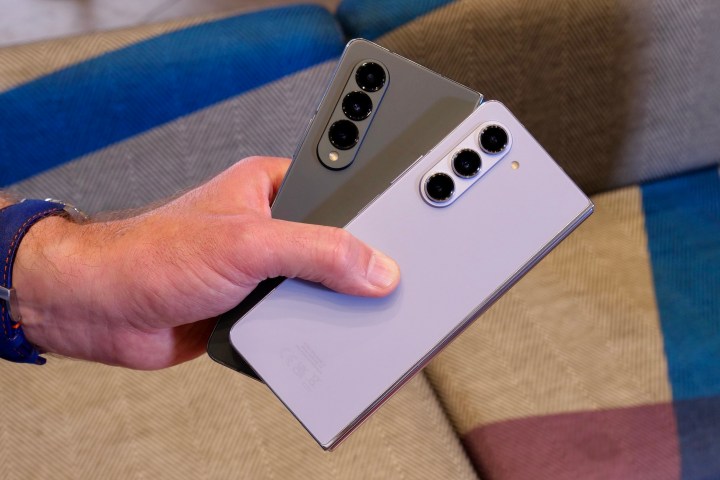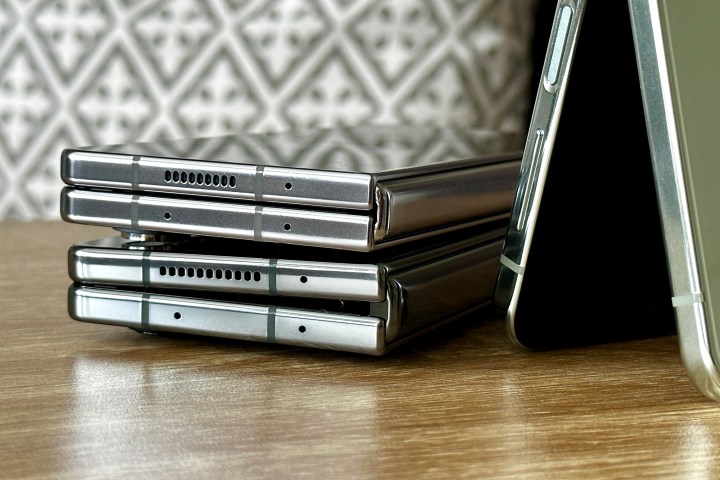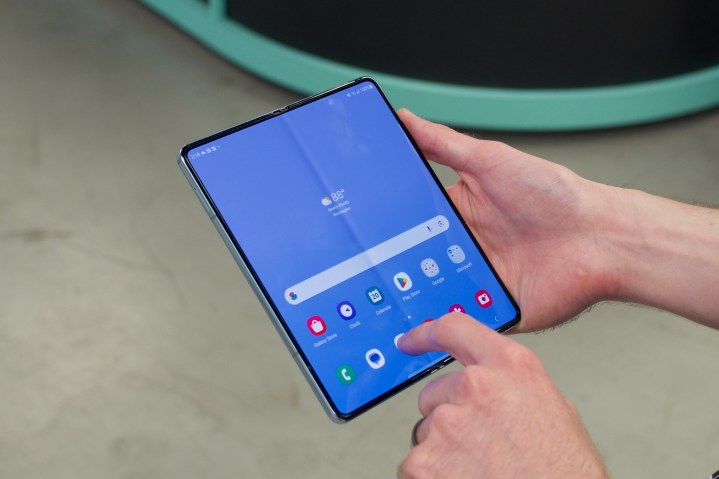
The Samsung Galaxy Z Fold 5 is the pinnacle of big-screen smartphones in 2023. I’m using it right now, and it’s spectacular. However, it’s not all that different from the Galaxy Z Fold 4, apart from changes to the size and weight. Boring! Where’s all the innovation and excitement?
My confession is that I almost fell into this trap and almost passed the Z Fold 5 off as a tedious, incremental update that threatened to put me to sleep. But when I started using it, I came to my senses. I’m holding the innovation, and the latest model’s evolution actually has all the excitement I’m looking for.
Complaints about the Z Fold’s size

Foldable smartphones are thicker and heavier than non-folding phones, and it puts people off. But it’s the sacrifice some of us currently make to carry around such a versatile device. If you want a thin and light smartphone, at this time, a folding model isn’t really for you, as the Galaxy Z Fold 5 is 13.4mm thick closed and 253 grams. For comparison, the Samsung Galaxy S23 is 7.6mm thick and 168 grams, making the Z Fold 5 an absolute behemoth.
But this is rapidly changing. The Z Fold 5 is 2.4mm thinner than the Z Fold 4 and 10 grams lighter too. It’s 18 grams lighter than the Galaxy Z Fold 3 and 2.6mm thinner, plus it folds completely flat, which neither of these two phones did. Go back even further, and the Z Fold 5 is nearly 30 grams lighter than the Galaxy Z Fold 2 and another millimeter thinner. Plus, it has gained an IPX8 rating, a lot more durability, and the bezels are noticeably smaller.
All this in less than three years, along with the expected advancements in power, ability, and features. You can even use an S Pen stylus with the Z Fold series now, and there’s a handy case that keeps the pen with the phone. It’s only when we look at the Z Fold series as a whole that the breadth and impact of these alterations become clear, and the fairly short amount of time it has taken to implement them. Not to preempt my review, but the difference the changes make is dramatic.
The screen is the innovation

I’ve used all of Samsung’s folding phones since the Galaxy Fold, and I know that reducing the size and weight are the two most important aspects of getting more people to use these great devices every day. We’re watching it happen too, and I can confidently say the Z Fold 5 is absolutely the most usable model yet. Obviously, the price has to come down for true wide adoption, but that’s probably not going to happen just yet.
But thinner and lighter just isn’t all that exciting, is it? It’s not really an attention grabber when other phones have flashing lights, so where is the Galaxy Z Fold 5’s big feature that makes it a worthy successor to the previous versions that Samsung can use to prove it’s still a big innovator? You don’t have to look far. The Z Fold 5’s big innovative feature is the fact it opens up to show a massive 7.6-inch screen but remains perfectly usable when you close it back up.
Yes, it’s the same big innovative feature that sold the original Galaxy Fold and all the models that came after it, but that’s fine. It’s just about the coolest feature on a smartphone today, and I don’t really need anything else tacked on to embellish the Z Fold series’ appeal. The folding screen is the Z Fold’s main, innovative, and forward-thinking feature and the heart of its appeal.
The engineering challenge is huge

The more you think about reducing the overall size and the weight of a phone and making the hinge better, the more you realize what an engineering challenge it is on a phone like the Z Fold 5. Big screens require more space and bigger capacity batteries to operate, and those components add weight and increase the size of a device. Our demands for longer battery life and thinner devices with greater functionality make it a tough balancing act for manufacturers to get right.
Samsung’s folding smartphones don’t just have one big screen; they have two. Folding phones, in general, are also notorious for being more fragile than non-folding smartphones, and the hinge needs to be durable enough to reliably last for years of daily use. We want water resistance and scratch resistance, and Samsung has worked hard to consistently deliver, update, and improve all these things on the Z Fold series, and at the same time up the long-term durability.
I care more about the size and weight of a folding phone than I do about “innovative” features that appear to make the phone a better upgrade over its predecessor. The primary reason I’ll buy it is the folding screen, and it always will be. Therefore, improving the big-screen foldable platform as a whole is the kind of innovation I want — and the kind that will convince others to try a folding smartphone for the first time.
What is it you’d like to see?

I’m satisfied seeing the direction Samsung is taking with the Z Fold series. Measurable improvements that change the biggest problems many people have with this type of phone — the size, weight, and durability. But I understand this won’t satisfy everyone. However, where does the big-screen foldable go beyond making it more manageable and ergonomic to use?
Right now, the Galaxy Z Fold 5 is more powerful than before, yet thinner and lighter than the Galaxy Z Fold 4. It has a pair of beautiful screens and multiple cameras, and the most tactile hinge in the industry. It’s evolving in a satisfying way, even if, on paper, it all looks quite dreary. However, I also think this is the way the Z Fold series will be for the next few years, as outside of the usual advancements we expect (processor, camera, and perhaps screen tech), where else can the big-screen folding platform go? It’s primarily going to edge closer to the convenience we get from a non-folding phone.
If you’re looking at the Samsung Galaxy Z Fold 5 and thinking it’s not much different from the Galaxy Z Fold 4, you’re not mistaken, but it’s crucial to remember the changes that have been made really are making the phone better. Should you upgrade? Probably not. Should you pass it by because it doesn’t have something even more special on paper than the Z Fold 4? Absolutely not, and that’s the trap I almost fell into myself.


